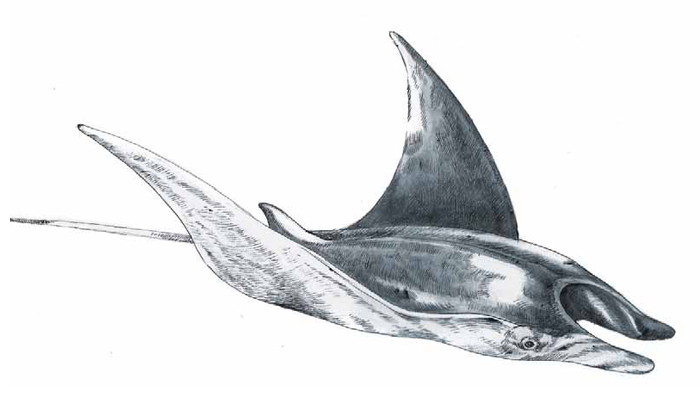One of the greatest success stories in recent years when it comes to the study of animal behaviour is the first published study on the use of satellite telemetry to track the open-ocean journeys of manta rays, the world’s largest batoid fish. They possess the highest brain-to-body ratio of all sharks and can grow up to 25 feet in width. Despite their malevolent, bat-like appearance, manta rays, sometimes referred to as the “devilfish” – are harmless to humans. Slow-growing and by and large not very fecund, they are able to give birth to only one or two live ‘pups’ every other year following a gestation period of 12 months.
Manta rays are listed by the International Union for Conservation of Nature (IUCN) as “Vulnerable” to extinction. They have been known to be purposefully captured in fisheries operations in the Pacific Ocean, Indian Ocean and Caribbean Sea, mostly for shark bait and a demand for gill rakers (small, finger-like structures that filter out the ray’s minute zooplankton prey) in the traditional Chinese medicinal trade. Critical information for conservation planning, such as knowledge of their movements and ecology, have been lacking for years, as manta rays are one of the least understood of the marine mega-vertebrate groups and among the last to be satellite tracked.
According to Dr. Rachel Graham, lead author of the study and director of WCS’s Gulf and Caribbean Sharks and Rays Program, almost nothing was known beforehand about the movements and ecological needs of the manta ray, one of the ocean’s largest and least-known species prior to this study. She also claimed that the real-time data illuminated the previously unseen world of this mysterious fish and would help to shape management and conservation strategies for the species.
The research team attached satellite transmitters to manta rays off the coast of Mexico’s Yucatan Peninsula over a 13-day period. The tracking devices were attached to the backs of six individuals -four females, one male, and one juvenile. The satellite tag data revealed that some of the rays travelled more than 1,100 kilometers during the study period, spending most of their time traversing coastal areas plentiful in zooplankton and fish eggs. Like baleen whales and whale sharks, manta rays are filter feeders that swim through clouds of plankton with mouths agape.
The research team also found that the manta rays spent nearly all their time within Mexico’s territorial waters (within 200 miles of the coastline), but only 11.5 percent of the locations gathered from the tagged rays occurred within marine protected areas – and since the majority of ray locations were recorded in major shipping routes in the region, manta rays could be vulnerable to ship strikes.
Hopefully, this means that we may now expect the relevant authorities to take some care of the manta rays within their waters, in order to ensure their continued survival and not put them at greater risk of extinction.














